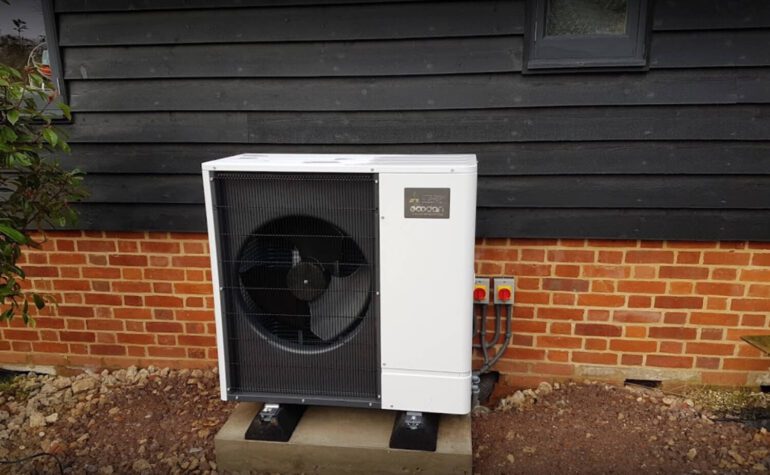TL;DR:
- Researchers from Pusan National University, South Korea, introduce an innovative machine learning system for air-source heat pumps (ASHP).
- The system, called ANN-based Optimum Control Logic (OCL), allows users greater control over heating and cooling timing.
- OCL operates without altering existing components, leading to cost reduction.
- The backpropagation algorithm forms the foundation of the system, refining error detection.
- ASHP’s performance is enhanced through judicious control of the fan coil unit (FCU) and heat storage tank.
- Notable improvements were seen in Coefficient of Performance (COP) under various conditions.
- The study aims to incorporate standard effective temperature and human comfort for further development.
- Published as “Performance Improvement of Air-Source Heat Pump via Optimum Control Based on Artificial Neural Network” in Energy Reports.
Main AI News:
In a breakthrough development, a team of researchers hailing from Pusan National University, South Korea, has introduced an advanced machine learning system tailored to grant users heightened authority over the temporal regulation of heating and cooling functions within air-source heat pumps (ASHP). Traditionally, ASHP manufacturers have imposed restrictions on user control, particularly concerning ASHPs that integrate renewable energy as an auxiliary heat source. Termed the Artificial Neural Network (ANN)-based Optimum Control Logic (OCL), this novel control mechanism functions adeptly without necessitating alterations to the core constituents of prevailing systems, thereby inducing cost savings.
At the crux of this system lies “backpropagation,” an algorithmic technique that meticulously detects errors by traversing from output nodes to input nodes. The crux of the ANN model was meticulously fashioned through the creation of a training dataset using synthetic time-series load data. This model was then applied to an ASHP replete with a cutting-edge heat storage tank configuration within a Busan-based office building. The heat pump boasts a commendable 9 kW capacity for heating operations and 8 kW for cooling tasks.
Under the purview of the proposed system architecture, activation of a fan coil unit (FCU) materializes when the ambient temperature descends below 21°C, and concurrently, the heat storage tank’s temperature eclipses 43°C. Conversely, the heating operation halts its function upon the room temperature surpassing 23°C, juxtaposed with the heat storage tank’s temperature plummeting below 43°C. Within this orchestration, the ASHP undertakes heat storage when the heat storage tank’s temperature dips beneath 43°C, with the storage procedure experiencing interruption upon the temperature transcending 47°C.
Crucially, the research collective discerned that this system empowers users to judiciously choose the water pump flow rate, even amid the harshest weather extremities. Furthermore, a notable enhancement in the Coefficient of Performance (COP) of the ASHP comes to the fore, showcasing a remarkable 0.88% augmentation in instances of low flow rates and an even more substantial 6.23% upliftment when harnessed in tandem with a variable-speed water pump in dynamic simulations.
Foreseeing a trajectory of continuous advancement, the researchers envisage refining the system through the incorporation of parameters such as the standard effective temperature and human body comfort within the overarching control logic.
Conclusion:
The unveiling of the ANN-based Optimum Control Logic (OCL) system by Pusan National University researchers presents a transformative advancement in the heat pump sector. Offering users unprecedented command over heating and cooling, while maintaining cost-efficiency, this innovation has the potential to reshape the market by setting new standards for performance and control in air-source heat pumps.

